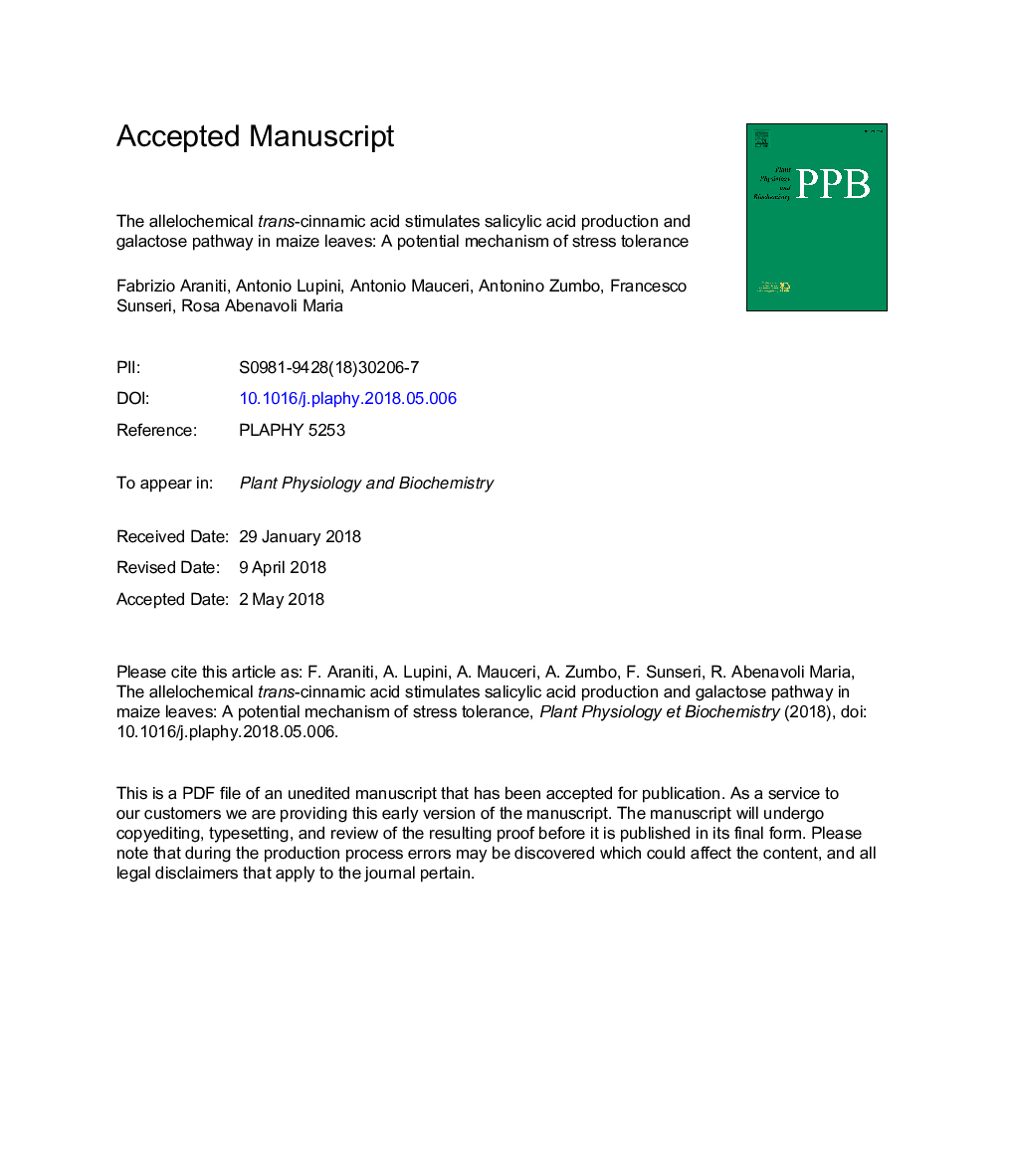| کد مقاله | کد نشریه | سال انتشار | مقاله انگلیسی | نسخه تمام متن |
|---|---|---|---|---|
| 8352832 | 1541893 | 2018 | 29 صفحه PDF | دانلود رایگان |
عنوان انگلیسی مقاله ISI
The allelochemical trans-cinnamic acid stimulates salicylic acid production and galactose pathway in maize leaves: A potential mechanism of stress tolerance
ترجمه فارسی عنوان
اسید ترانس آکرلمیکال آلکیل شیمیایی باعث تولید اسید سالیسیلیک و مسیر گالاکتوز در برگ های ذرت می شود: مکانیسم بالقوه تحمل استرس
دانلود مقاله + سفارش ترجمه
دانلود مقاله ISI انگلیسی
رایگان برای ایرانیان
کلمات کلیدی
موضوعات مرتبط
علوم زیستی و بیوفناوری
علوم کشاورزی و بیولوژیک
دانش گیاه شناسی
چکیده انگلیسی
In this study, the effects (5 days) of the secondary metabolite trans-cinnamic acid on maize leaves (Zea mays L.), through a physiological and an untargeted metabolomic approach, were evaluated. A reduction in leaf growth and development accompanied by a decrease in protein content was observed in treated seedlings. Besides, trans-cinnamic acid stimulated the photosynthetic machinery with a significant increment in pigment content (chlorophyll a, b and carotenoids), a stimulation of the light adapted PSII efficiency (ɸII) as well as the chlorophyll a fluorescence (YNO), the apparent electron transport rate, and the regulated dissipation of the energy (YNPQ). By contrast, the dark adapted PSII parameter (Fv/Fm) was not affected suggesting that no physical damages to the antenna complex were caused by trans-cinnamic acid. These results suggested that maize seedlings were experiencing a stress but, at the same time, were able to cope with it. This hypothesis was confirmed by both the increment in benzoic and salicylic acids, important molecules involved in stress response, and the metabolomic results, which pointed out that the seedlings are directing their metabolism towards galactose production modulating its pathway, which is pivotal for the production of the antioxidant compound ascorbic acid (ASA). Indeed, in treated plants, a significant increment in total ASA content (28%) was observed. The results suggested that the main strategy adopted by plants to cope with trans-cinnamic-induced stress consisted in the modulation of their metabolism in order to increase the total ASA and carotenoids concentration, radical scavenging species.
ناشر
Database: Elsevier - ScienceDirect (ساینس دایرکت)
Journal: Plant Physiology and Biochemistry - Volume 128, July 2018, Pages 32-40
Journal: Plant Physiology and Biochemistry - Volume 128, July 2018, Pages 32-40
نویسندگان
Fabrizio Araniti, Antonio Lupini, Antonio Mauceri, Antonino Zumbo, Francesco Sunseri, Maria Rosa Abenavoli,
